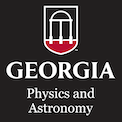Dr. Robin Shelton will be hosting Dr. Amy Lovell of Agnes Scott College Department of Physics and Astronomy this week. Her talk is entitled, "Radio Observations of Comets and Asteroids."
Small bodies -- comets and asteroids -- are remnants from the era of planetary formation, and offer clues on the history of our solar system. Radio astronomy observations provide a unique perspective on these small bodies. Long-wavelength spectroscopy enables a characterization of ice sublimation from the nucleus and constrains the rate of gas production, speed of gas outflow, and asymmetries in the gas coma. We have used the Arecibo 305m radiotelescope to observe OH in a number of long- and short-period comets, and this presentation will highlight some results. In addition, I will provide a short overview of thermal observations of asteroids and describe the promise of future instrumentation in radio astronomy for asteroid studies.


